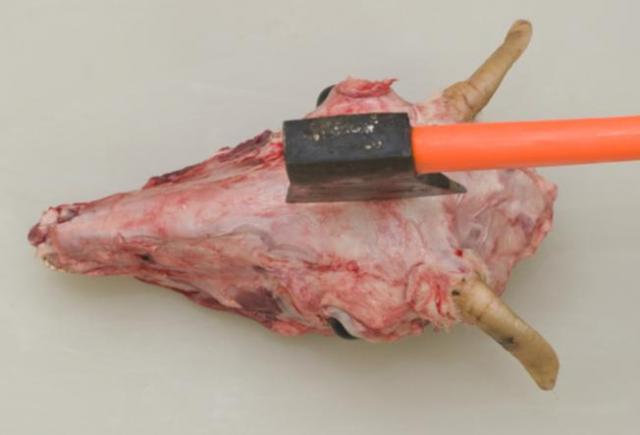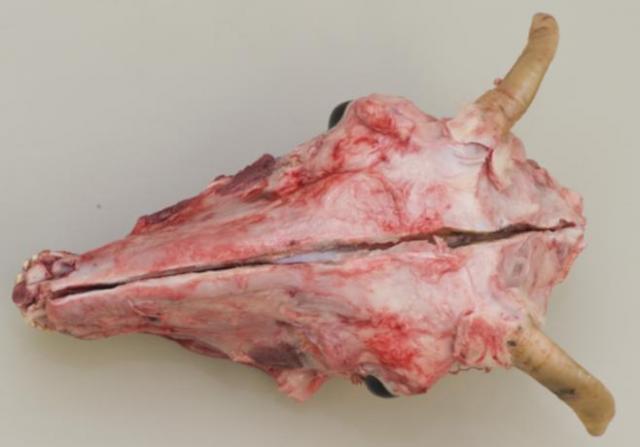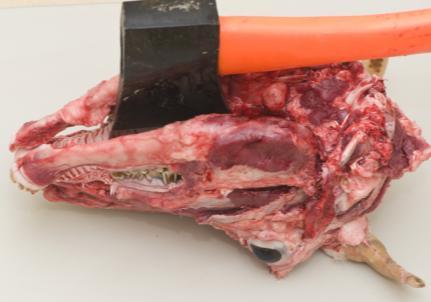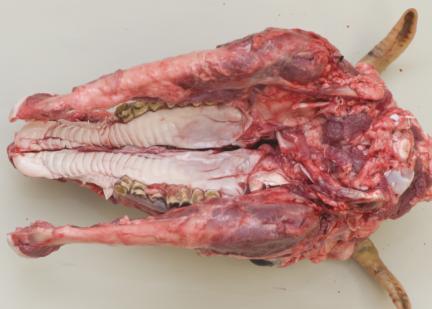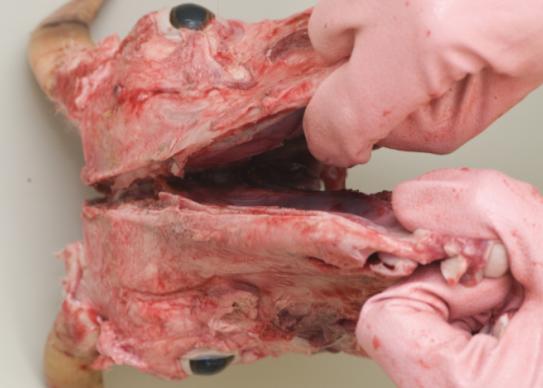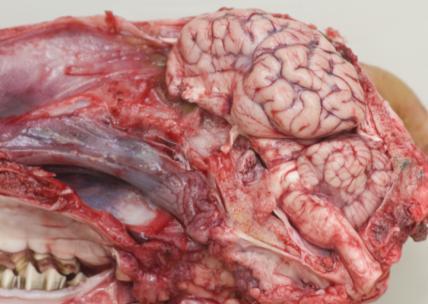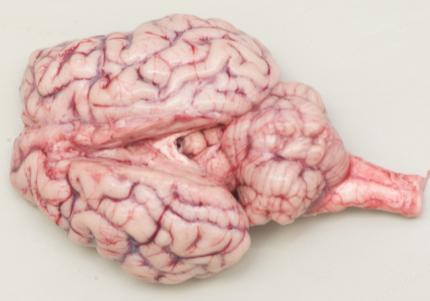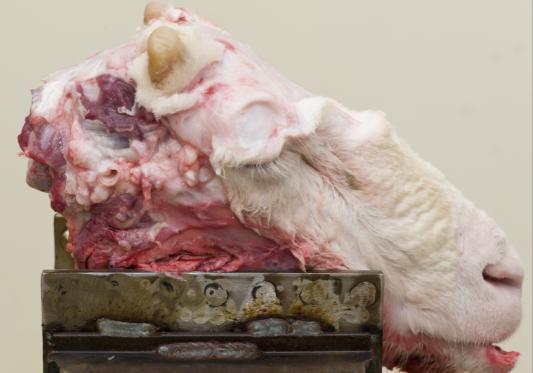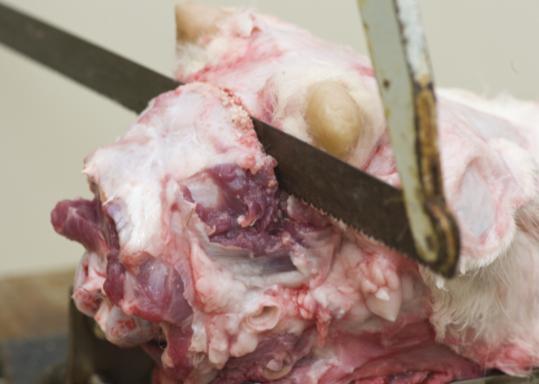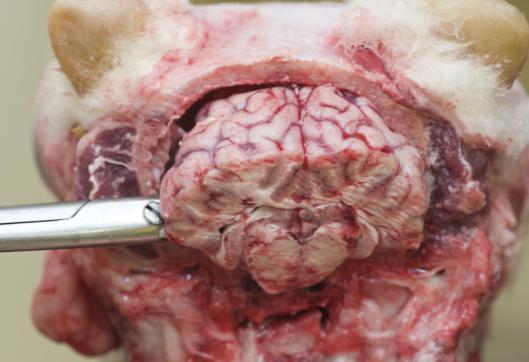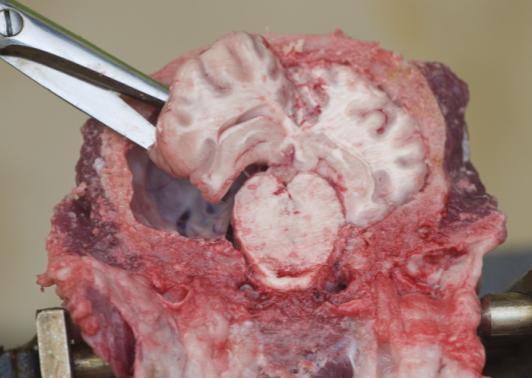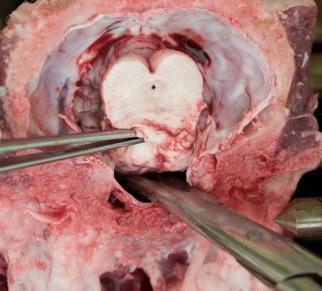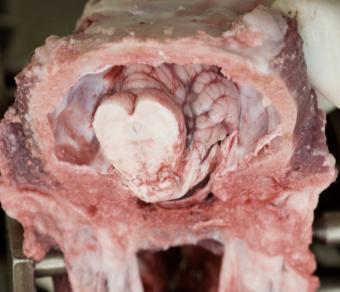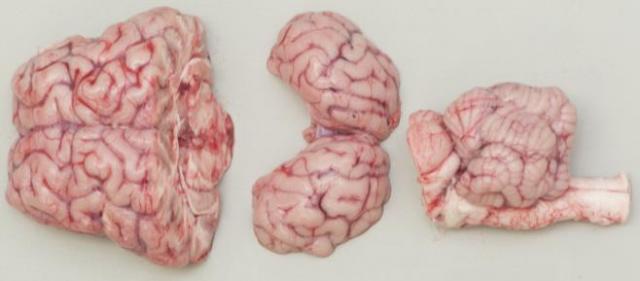Method 1: Longitudinal craniotomy
Step 1
Remove the head at the atlanto-occipital joint. Remove the tongue and pharynx to expose the hard and soft palate. Split the mandibular symphysis and place the head on a non-slip surface such as a rubber mat or onto the ground, using the separated mandible to improve stability.
Step 2
Using a hatchet and a mallet, make a dorsal midline cut through the bone from the nose to the foramen magnum. Place hatchet blade at cutting site and use mallet to split the bone. Do not swing the hatchet. The head does not need to be skinned, but making an incision through the skin along the proposed line of cutting helps to stop the hatchet blade from deviating.
Step 3
Turn the head over and cut through the soft and hard palate and ventral cranium.
Step 4
Stand the head upright on the foramen magnum and use a knife to sever any remaining attachments. Lever the nasal bones apart, using the hatchet to increase leverage and split the skull. If nasal bones feel as if they will snap, check all the bone is cut, especially between the occipital condyles.
Step 5
Use scissors to cut the remaining meninges and cranial nerve attachments to allow removal of the entire brain. Note: for TSE exclusion testing, remove the dorsal cerebellum (sheep only) and 2-3cm spinal cord and submit these sections fresh. Fix remainder of brain in 10% buffered formalin.
Method 2: Transverse craniotomy
When using the transverse craniotomy technique in cattle, it is advisable to leave the head attached and immobilise for sawing by tensioning nose grips to a vehicle or other solid object. Alternatively, flex the neck and tie the nose grips to the hock. In small ruminants, removing the head is recommended.
Step 1
Stabilise the head for sawing by placing it on a non-slip surface or mat. The head does not need to be skinned, but a knife cut through the skin at the intended line of sawing is recommended.
Step 2
Begin sawing vertically in a line one centimetre rostral to external ear canal and extend the cut through the bone until the cranium hinges apart. Remove the head at the atlanto-occipital joint if still attached.
Step 3
Begin with the rostral half of the skull. Using curved scissors, cut the ventral nerve roots and the olfactory bulbs. Remove the rostral brain.
Step 4
Shell out the occipital lobes in the caudal half of the skull to expose the opaque tentorium cerebelli.
Step 6
Using scissors, cut the cranial nerves on the ventral and lateral surfaces inside the cranium and then around the cut spinal cord at the foramen magnum. Using a finger or plunger from a syringe, gently push the hindbrain and cerebellum rostrally out of the cranium.
Step 7
Fix the three brain segments whole in 10% buffered formalin.
Note: For TSE exclusion testing, remove the dorsal cerebellum (sheep only) and 2-3cm spinal cord and submit these sections fresh. Fix remainder of brain in 10% buffered formalin.

